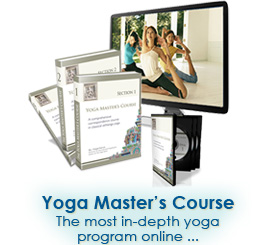[ Excerpt from The Science of Yoga, page 146 ]
One of the most popular and well-known practices of hatha yoga today is the sun salutation, known in Sanskrit as surya namaskara. This excellent kriya is a relatively recent addition to the practices of yoga, and many variations of it exist.
History of The Sun Salutation
One of the oldest forms of worship known to man is the adoration and homage paid to that core of our natural existence, the sun. The sun is at the heart and centre of life. It gives us warmth and light, provides us with food and nourishes us in innumerable ways.
Cultures and civilization throughout antiquity have always recognized and revered this central life-giving figure in our solar system, and forms of solar veneration can been seen in nearly every ancient culture and civilization on earth.
Yet modern man may see very little beyond superstition in such action, viewing the sun as a mere ball of constituent gases and chemical reactions, detached from the actuality of the inseparable nature of the sun with all life here on earth. As Swami Gitananda Giri aptly points out:
"Ancient man was very close to nature in worshipping the sun. Modern man has lost his appreciation to some degree, but the present search for an inexhaustible energy to supply the endless greed of consumer man is now forcing a look to the sun as a source for future power and energy. That the sun has at all times been the source of the very energy that we need inwardly and outwardly is now beginning to dawn upon educated man."
Though the 17 or more varieties of the surya namaskar, or sun salutations of the yogis are of relatively recent origin, they derive from the ancient ritualistic Vedic worship of the sun and still can be observed in the daily morning ablutions (rituals) of the Hindu Brahmin.
Much of the movements in these early morning pujas (ceremonies), such as the raising of the arms together in anjali mudra (a salutation of the highest gesture to the sun), and the contrary reverential bowing forward and touching of the earth (bhumi sparsha).
Though the physical benefits of this kriya are also apparent, one should not approach the surya namaskar purely as a physical health practice. As the sun is the ultimate sustainer of life itself, the surya namaskar, like the morning rituals of the Brahmin, is a sacred and reverential gesture in which one pays homage every day to the sun before engaging in daily activities.
It should go without saying that one should face the sun while making this gesture of praise and thanks. In many modern yoga classes, I see people performing this practice with their backs to the sun, saluting surya with their behinds!
I also observe this practice commonly being performed in the evenings or night time, when the sun has long since departed for the day. Remember to practice surya namaskar with awareness! One should practice it with a deep feeling within of reverence and devotion, and not merely as a form of exercise.
The Healing Energy of the Sun
The yogis were very cognoscente of the healing capacities of the sun's early morning rays, particularly its beneficial effects on the exocrine and endocrine glands.
Therefore, the surya namaskar is an excellent health bath for the exposed body. Traditionally, it is performed without clothing and one is encouraged to do so where and when appropriate. Whenever possible then, one should expose as much of the body as possible to the light of the early morning sun.
If you're unable to practice outdoors, in direct presence of the sun's rays, then you should make every effort to at least maintain the practice at sunrise, still facing toward the east. It is also good to have a symbol in place of the sun, such as a large orb or circle, or a diagram of the symbol OM, or even a brilliant image of the sun in painting or other artistic form.
[Continued...]
---------------------
NOTE: This yoga article is an excerpt from The Science of Yoga, an online yoga training program with streaming yoga videos and 600 pages of step-by-step yoga instruction.

"The Science of Yoga is a course worthy of
leather binding and an honored place in the
finest libraries in the world
... It is indeed a masterful work."
Dr. John Michael Christian
AwakeningWithYoga.com
Learn More About
The Science of Yoga Course
|






